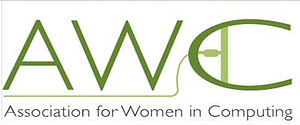- 5 Professional Organizations Women in Tech Should Consider Joining - September 15, 2015
- Does Hollywood Influence Women in Tech Careers? - August 10, 2015
- A Chat with Software Developer Victoria Fry: A Career in Tech is All in the Family - August 8, 2014
Everyone wants to be part of the in-crowd. As a technology geek, you may have spent high school or maybe even college outside the popular kids table. Or, you had the science club or computer club to hang out with and share stories. In the professional world, we still need groups to help us along our career paths, broaden our horizons, and just make like-minded friends. As a woman in tech, finding other women to share our particular geekiness is incredibly wonderful. And, if we can learn new skills, grow professionally, and boost our businesses along the way, well, that’s great, too. With that in mind, here’s the low down on five national organizations for women in technology.
Association for Women in Computing (WIC)
Who’s it for: Women in the computing professions such as programmers, system analysts, technical writers, Internet specialists, trainers, and consultants.
How to join: You may join any one of the local chapters nationwide or become an independent member by filling out an application online. Independent membership is for professionals in the U.S and abroad who cannot physically attend chapter meetings. Alternately, any five individuals in a particular area can apply to form a local chapter.
Benefits: Career growth through volunteer and leadership activities, networking, and mentoring. Local chapters hold monthly meetings that include dinner with guest speakers and workshops. Job listings, career planning, skill enhancement and scholarships are some of the other benefits.
Cost: Local chapters’ dues vary by chapter but range from $35 to $100 per year. The average is $61. Annual dues for Independent Members is $25.
Women in Technology International (WITI)
Who’s it for: WITI boasts itself as the “leading global business organization for women in technology.” It is for women who consider technology central to their businesses, careers, and professions. WITI encourages men to join as well.
Benefits: They include networking events nationwide, professional development, mentorships, opportunities to establish your personal brand, monthly webinars, teleclasses, and speaking opportunities.
How to join: You can sign up online.
Costs: WITI offers Individual, Small Business, Corporate, and student memberships. An individual yearly membership is $250. Student yearly memberships are $50.
IEEE Women in Engineering (WIE)
Who it’s for: Women in engineering, computer sciences and information technology, physical sciences, biological and medical sciences, mathematics, technical communications, education, management, and law and policy. IEEE WIE touts itself as “the largest international professional organization dedicated to promoting women engineers and scientists.”
Benefits: The mission of IEEE WIE is to facilitate the global recruitment and retention of women in technical disciplines. Benefits include career resources, awards/recognition, continuing education, access to the IEEE WIE electronic membership directory, a monthly electronic newsletter, and award-winning Women in Engineering magazine. There are also local networking events through WIE affinity groups.
How to join: You must be an IEEE Member to join WIE. Professional IEEE memberships in the U.S. are $197 annually. IEEE student memberships in the U.S. are $32.00 annually.
Cost: The WIE membership dues is $25 annually, but free to students.
Society of Women Engineers (SWE)
Who it’s for: For women and men in the engineering professions including computer software and hardware engineering.
Benefits: Networking, educational development, awards & scholarships, the SWE Magazine, monthly newsletter, online communities, webinars, podcasts, online career center, and outreach; Affinity groups for African-American, Latina, LGBT, Native American, and IRIS (Internationals Residing in the States). Members develop leadership skills by publishing articles, presenting technical papers, leading workshops and seminars.
How to Join: Fill out an application online or by pdf.
Cost: Professional member ship is $100 annually. Collegiate Membership is a one-time payment of $50 that can be renewed every year you’re in college for no cost.
Women Entrepreneurs in Science and Technology (WEST)
Who it’s for: Women and men involved in science, engineering, and technology.
Benefits: Networking, mentorships, workshops and panels including advice about career advancement, alternate career options, professional skill building, and entrepreneurial thinking. WEST offers encouragement and recognition of women’s achievement in science, technology and entrepreneurial enterprises.
How to Join: You can join online.
Cost: Individual one year memberships are $95.
With such variety, perhaps you’ll find one of these organizations will be the perfect fit for you. (Or, maybe even more than one.) Remember, it’s never to early to start making those important professional contacts.
Main image credit: Stockvault.net; all trademarks and logos are the property of their respective owners.
















